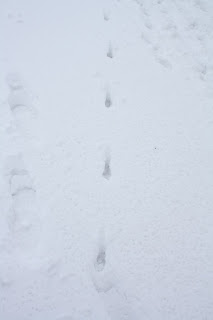 Unfortunately, it's not just humans who find these vegetables tasty and on my plot it's necessary to net the young plants in particular to fend off pigeons and later on in the season action needs to be taken to remove black fly which are attracted to the tender growing tips. However, a big problem for me is that my plants are weakened by attacks from the pea and bean weevil which I felt dramatically reduced vigour and the productivity of my plants. They exist in the soil at first then emerge to feed on the leaves. Common advice is that these pests can make the plants look unsightly (cutting quite regular little notches in the edges of the leaves) but that the plants recover and only the most intense attacks can prove terminal.
Unfortunately, it's not just humans who find these vegetables tasty and on my plot it's necessary to net the young plants in particular to fend off pigeons and later on in the season action needs to be taken to remove black fly which are attracted to the tender growing tips. However, a big problem for me is that my plants are weakened by attacks from the pea and bean weevil which I felt dramatically reduced vigour and the productivity of my plants. They exist in the soil at first then emerge to feed on the leaves. Common advice is that these pests can make the plants look unsightly (cutting quite regular little notches in the edges of the leaves) but that the plants recover and only the most intense attacks can prove terminal.  Nevertheless, I want to take some direct action (chemical free) in the aim of defeating this enemy and have discovered the following advice. Although they are quite quick, it is possible to capture these creatures and some suggest that you place a container of water or a piece of sticky card under the plants to
Nevertheless, I want to take some direct action (chemical free) in the aim of defeating this enemy and have discovered the following advice. Although they are quite quick, it is possible to capture these creatures and some suggest that you place a container of water or a piece of sticky card under the plants to  catch them when you shake the plants and make them fall off the leaves. Another suggestion I found on the Internet was to make up a nicotine solution to use as a spray: boil up 3/4 pound of cigarette ends in a gallon of water for 30 minutes and dilute this solution 1:1 before spraying. This recipe came with some strong advice about storing this liquid carefully and did not mention its potential effects to other beneficial insects. I'd hate to disrupt the burgeoning ladybird population on my plot so I may consider the nicotine plan as back up position and try the manual removal techniques first.
catch them when you shake the plants and make them fall off the leaves. Another suggestion I found on the Internet was to make up a nicotine solution to use as a spray: boil up 3/4 pound of cigarette ends in a gallon of water for 30 minutes and dilute this solution 1:1 before spraying. This recipe came with some strong advice about storing this liquid carefully and did not mention its potential effects to other beneficial insects. I'd hate to disrupt the burgeoning ladybird population on my plot so I may consider the nicotine plan as back up position and try the manual removal techniques first.I'd be interested if anyone has any opinions on these tactics or any other ideas how I can maximise my pea and broad bean supply this year?
Thanks for reading.






















